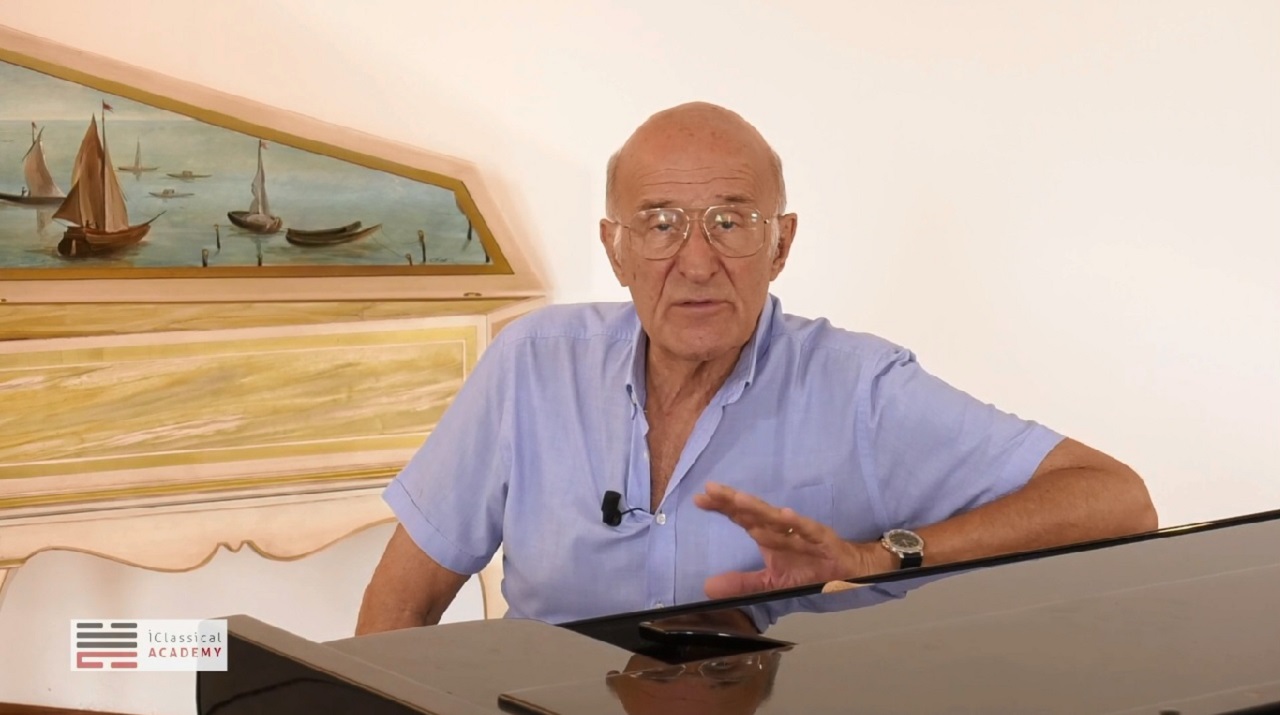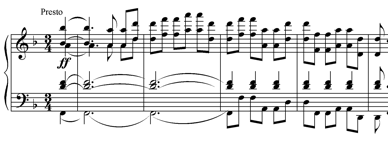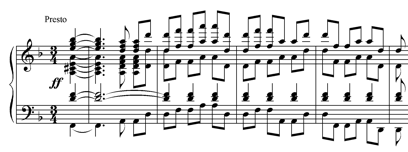Beethoven Ninth Symphony - Nicht diese Töne?
by Guillermo Scarabino

In the 4th movement of the 9th Symphony, before tackling the text of Schiller's Ode to Joy, Beethoven inserted words of his own authorship: O Freunde, nicht diese Töne! / Sondern laβt uns angenehmere anstimmen, und freudenvollere! ("Oh, friends, not these sounds! / But allow us to sing more pleasant and full of joy"). Musicologist Stephen Hinton called this point the hermeneutic crux of the work, an unresolved question, and compared it to the Rorschach test, in which the same image has different meanings for different people.
The dichotomy between "not" (nicht) and "but" (sondern) raises an obvious question: for Beethoven, which sounds are rejected and which sounds are more pleasant and joyful? I am going to risk a very simple hypothesis, which I have not found in the literature I know. To do this I propose to consider what precedes nicht and what follows sondern. Before the enunciation of the word nicht we have three complete movements and a good part of a fourth, whose themes are based on the D minor chord:
First movement, measures 17-19, descending arpeggio of D minor, main theme.

Second movement, measures 1-6, descending arpeggio of D minor, each note with the main rhythmic motif of the movement.

Third movement, measures 3-5, Violins I, descending arpeggio of D minor ornamented by the auxiliary sounds B-flat and E-flat, theme of the subsequent variations.

Fourth movement, measures 1-6, brief dissonant attack followed by a broken arpeggio of D minor.

This is followed by instrumental recitatives and brief allusions to the themes of the three previous movements, until in bar 92 the Freudetheme or "Theme of Joy" appears scored for cellos and double basses, followed by three instrumental variations.

This brings us to measure 209, in which Beethoven recapitulates the beginning of the movement. This time, the dissonance of the attack is much greater, since for a moment all the notes of D minor (D - E - F - G - A - Bb - C♯) sound simultaneously, causing rough frictions of semitones between E and F, A and Bb, C♯ and D.

In measure 217 the baritone enters singing O Freunde, nicht diese Töne! in D minor. It follows a harmonically ambiguous area in which the singer expresses Sondern laβt uns angenehmere anstimmen (measures 225-229). Two chords lead from D minor to D major and, already in this key, the baritone sings und freudenvollere (measures 231-236)

which recapitulates the cello and double bass passage immediately before the instrumental presentation of the Freudetheme already heard (measures 81-90).

Two factors make the passage exultant: 1. the long melisma on the syllable freu- that recalls the “Alleluia” of the Gregorian Chant, and 2. within the melisma, the extension towards the high note, that reaches F♯4, the highest note of the whole passage. The Freudetheme that follows this recitative begins with F♯, the main tone that marks the difference between D minor and D major. What was the difference in 'meaning' between D minor and D major in the 18th and 19th centuries? Just to mention one piece of evidence: Mozart's Requiem is in D minor, and Händel's Hallelujah is in D major. Finally, unlike the previous themes based on arpeggios (texture of disjointed, separated sounds), the Theme of Joy is presented in the form of a scale (texture of joint, united sounds), a musical manifestation of the expression Deine Zauber binden wieder, / was die Mode streng geteilt ("Your magic brings together / what fashion rigorously separated" measures 249-252).

In summary: Beethoven seems to say no (nicht) to the funereal key of D minor, to the exasperated dissonance and to the arpeggiated themes of disjointed degrees, to propose (sondern) the festive key of D major to celebrate Joy with a melody of joint degrees, painting musically the reunion of what fashion separated.
Guillermo Scarabino
About the author
Guillermo Scarabino was the Director of Artistic Production of the Teatro Colon Buenos Aires for many years. He is a well-respected conductor and was Juror member at several editions of the International Alberto Ginastera Composition Competitions. Furthermore, he taught at the Mendoza Summer Conducting Courses, at the International Summer Academy of Concepción (Chile) and at Venezuela’s Inter-American Conducting Courses. Maestro Scarabino is also a lecturer and author. He graduated from the University of Rosario (Argentina), obtaining a Master of Arts Degree in Music Theory at the Eastman School of Music (Rochester, NY).
The Art of Conducting - Guillermo Scarabino's Musical Jewel
 For iClassical Academy, Guillermo Scarabino recorded a 22 video online course about "The Art of Conducting". The course is online available and also contain an exhaustive eBook. You can find more information and content description below through the button "more".
For iClassical Academy, Guillermo Scarabino recorded a 22 video online course about "The Art of Conducting". The course is online available and also contain an exhaustive eBook. You can find more information and content description below through the button "more".
22 videos and 146 pages
the most exhaustive eLearning executive work about conducting.
